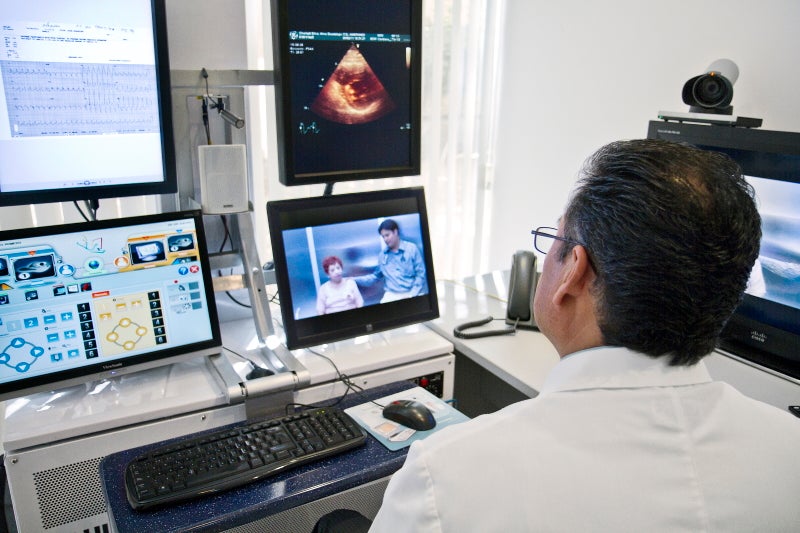
By Alexander O’Leary
It seems like for years the virtual clinical trial has been the future, and it is perhaps unsurprising that an industry that is famously quick to discuss but slow to act has only recently seriously started to incorporate ‘siteless’ elements into studies. Even down to wearables; the first FitBit, a goldmine of personal health data, was released in 2009, but is still not a go-to product for collecting research data.
However, with Covid-19 delivering a great big slap in the face to ongoing and planned studies, the future of clinical trials as virtual has rapidly become the very urgent present. Virtual is now, in many cases, the only way to complete an ongoing study, to start a new one, and to avoid haemorrhaging cash and opportunity.
There are numerous way in which a clinical trial can be made virtual, and I’ll explore some of those here; I’m including in my broad definition of “virtual” anything that can be considered ‘siteless’, or decentralised, including aspects that can be made “direct-to-patient”.
So what are the options for virtualising your study?
Data collection
Tech, gizmos, and gadgets are at the heart of virtual clinical research, from smartphone apps to wearables and bespoke e-diaries. A clinical study is nothing without data, and a considerable amount of heavy lifting in the value of virtual trials is done via the ease and speed of data collection afforded by the wealth of technology on the market. In many cases, the data can be collected and sent for analysis automatically, completely ruling out the ‘I forgot to do it’ element.
How well do you really know your competitors?
Access the most comprehensive Company Profiles on the market, powered by GlobalData. Save hours of research. Gain competitive edge.

Thank you!
Your download email will arrive shortly
Not ready to buy yet? Download a free sample
We are confident about the unique quality of our Company Profiles. However, we want you to make the most beneficial decision for your business, so we offer a free sample that you can download by submitting the below form
By GlobalDataPatient recruitment
The time taken to identify, recruit and enrol patients is a huge pressure on clinical research; something like 30% of Phase III failures are down to problems with patient numbers. Patient recruitment can be significantly expanded and sped up through decentralised means. Social media, the untapped golden goose of patient engagement, allows for global contact with prospective subjects and the targeting of them using a plethora of AI-driven tools.
Siteless trial set-ups also significantly speed up enrolment timelines, with patients not having to travel to a site to enrol and give their consent. This has been made even easier by the rise of eConsent solutions. Virtual trial recruitment also has a significant edge on traditional recruitment when it comes to difficult-to-approach patient groups; the elderly, for example, can be recruited and enrolled in the comfort of their own homes, without ever having to visit a site.
In-home nurses
While not technically a virtual aspect, in-home nursing for clinical trials provides a hybrid element that is being chosen by more and more studies. Again, this works particularly well for patient populations that typically have a high risk of study drop-out. Though not without its risks and considerations around staff safety, in-home nursing is by all accounts booming in the Covid-19-impacted trial world.
Direct-to-patient
Direct shipping of investigational medicinal products (IMPs) to the patient is perhaps the aspect of decentralised trials that has been in place the longest. Shipping can be direct from manufacturer or pharmacy, or from the clinical trial site – the latter of significant assistance at present for trials that have been interrupted by the Covid-19 pandemic. Perhaps one of the most interesting virtual technologies I have personally seen is a ‘smart fridge’ to ensure that temperature-sensitive IMPs are delivered directly to the patient’s home, stored correctly, and with all potential temperature excursions monitored by tracking the opening and closing of the fridge door – the fridge even featured a touch screen that collected data from the patient each day when they removed their dose.
Virtual trial challenges: data privacy and quality
So, virtual trials – so far, so easy? It’s not all plain sailing. As with anything, especially new ways of conducting an old process, there are limitations and concerns. The clinical trial space (and pharma generally) often talks a big game on innovations but fails to implement. Virtual clinical research is still relatively new, and there is a clear hesitance from sponsors to move away from more established models.
Data protection laws and requirements are tightening everywhere, and there are definitely concerns about the sharing of patients’ personal and biometric data over the internet. Even the largest organisations can be hacked, as has been shown on repeated occasions, and one can understand the pause for thought created by the risks here.
Siteless trials mean (mostly) no medical staff, so patients are responsible for receipt and storage of IMPs, dosage adherence, and entering and (often) transmitting their own data at the right intervals; that is a lot of trust placed in a patient that is usually placed in trained medical staff.
Technology challenges
What happens if a drug product needs to be refrigerated but the patient’s home has a power cut? The generator back-up of hospitals and clinics doesn’t exist in private homes. What happens if a wearable suffers a technical malfunction? The device cannot be easily replaced – at best, delivery of a new device is hours away, and that is once the patient and the study team know it has a fault.
Reliance on technology away from the site can present significant challenges, especially so in populations where not having to visit a site is of the most benefit, like the elderly. Elderly people are the least likely to be tech-savvy, and training them on new devices can be a time-consuming (and therefore expensive) process.
Regulator pressure
While regulators everywhere have issued guidance on virtual/decentralised trial processes, they are as new to the regulator as they are to the sponsor. With the time and cost of preparing a clinical trial, sponsors are understandably wary of slipping up when it comes to unfamiliar processes so plenty are still opting for the devil they know. It’s worth noting, however, that both the FDA and the UK’s MHRA have released guidance pointing to an element of regulatory “flexibility” when it comes to moving elements of ongoing trials to a virtual set up while the world is gripped by the Covid-19 crisis.
So, in summary, are virtual/decentralised/DtP trials the future? Yes they are, but they are the present too. Starting a new trial currently, outside of Covid-19 studies, is almost impossible without substantial virtual elements in place. Are there concerns and challenges? Absolutely, but I imagine the Wright brothers had some concerns to start with, and look how that idea took off.







